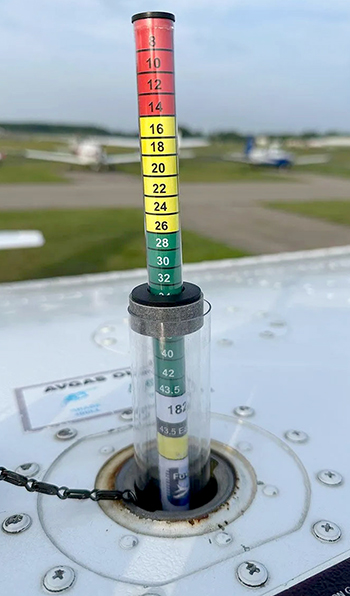Subscriber question:
"I don’t trust the fuel gauges in my airplane. How can I really tell how much fuel is in the tanks once I'm in the air?" — Bella N.
Bret:

“This is a two-part answer. The best way to know how much usable fuel you have in flight is with a calibrated fuel totalizer. Without one of those, the only times you can be 100-percent certain in the air is right after you take off with topped tanks—and after a dead-stick landing because you ran out.
However, that totalizer is useless if you don’t set it with the fuel you have on the ground before departure. That’s where the second part comes in: Knowing what you have before engine start..
That’s easy if you start with full tanks, but what if the fuel level of your 2001 Cessna 182’s 87-gallon fuel capacity is somewhere between the 65-gallon tab indicator and empty? Unless you’ve installed upgraded digital fuel senders, the fuel gauge won’t be of much help.
For that reason, the only way to know is to physically dip the tanks. Today’s fuel sticks have come a long way from the Sharpie-marked wood version. There are even versions that incorporate a float and a large text scale to accurately indicate fuel quantity to the nearest gallon, eliminating any guesswork. But if you have an older tube version or wooden stick, it will do the job—if you have verified each increment is accurate and you’re consistent on how you use it. Either way, enter the amounts shown on the dipstick into your fuel totalizer (or on your clipboard for measuring time in the air) and you’re good to go.
Lastly, take time to understand your airplane’s fuel gauge behavior. Even if they are wildly inaccurate in the upper 2/3s of your tank’s capacity, they are likely consistent when only reserve fuel remains. Learn that reading and what it equates to in flight. That’s critical information if you experience an unlikely fuel leak, or just end up in the air far longer than planned.”
Do you have a fuel totalizer (or equivalent) in the aircraft you fly the most?

